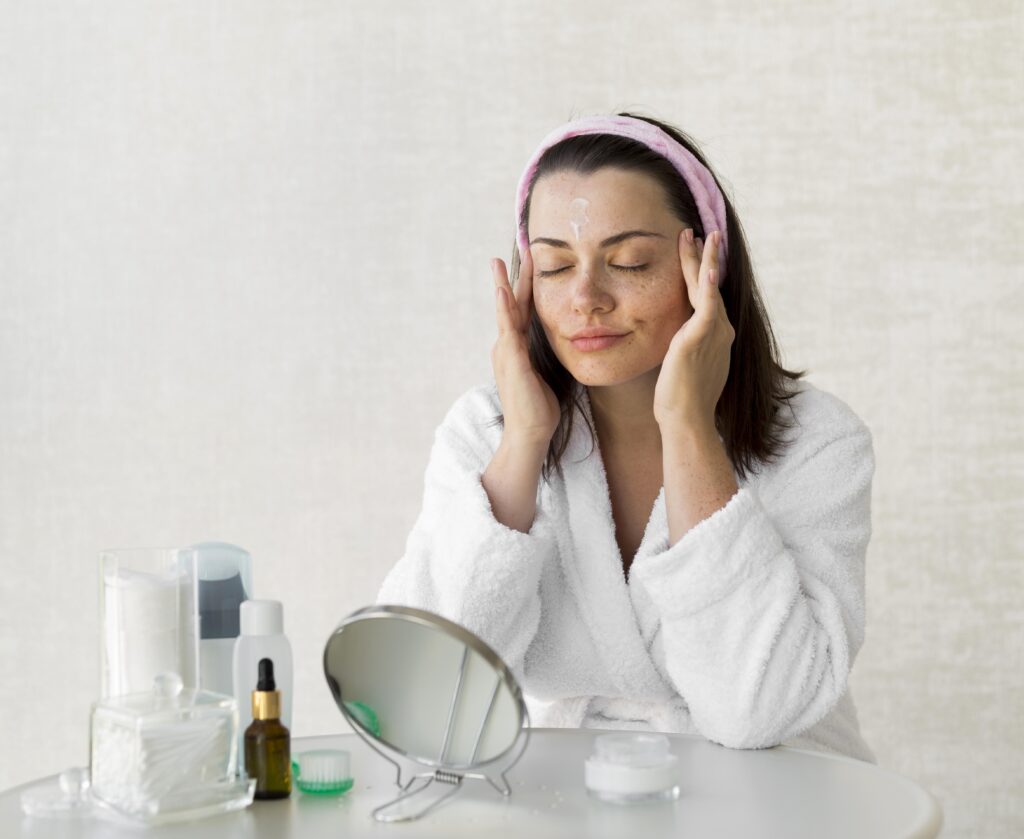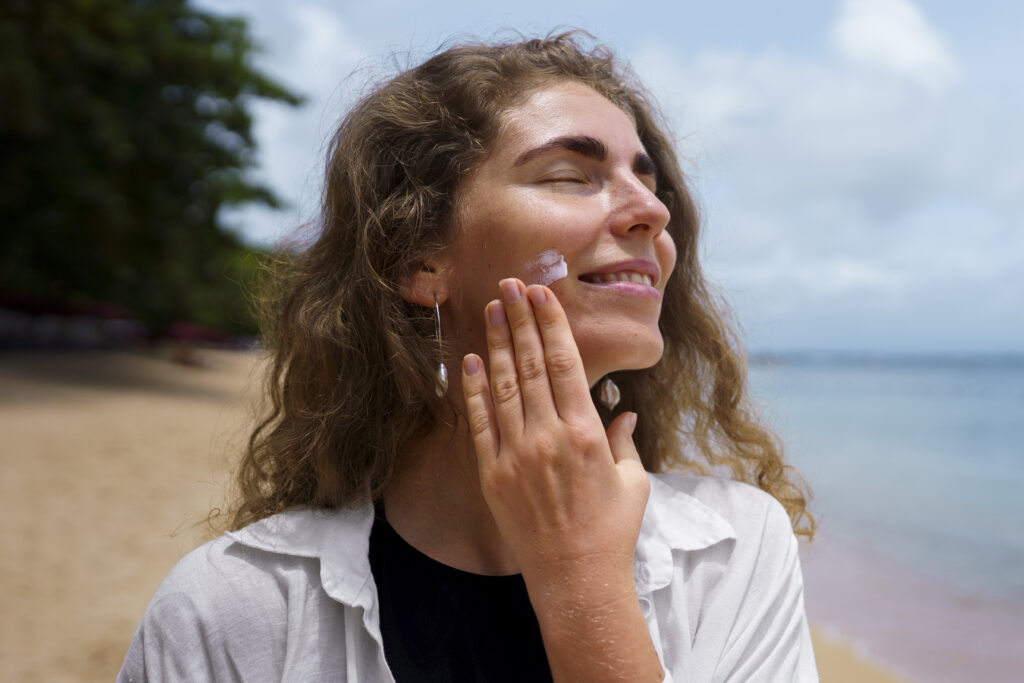In the pursuit of healthy, youthful-looking skin and chemical peels have become one of the most trusted dermatological treatments worldwide. Whether it is to smooth fine lines, fade acne scars or even out pigmentation, a peel can rejuvenate the skin’s surface in a way that topical creams simply cannot.
But what exactly happens during a chemical peel and are the results really worth it? In this article, we will explore the science, the types, the chemical peel benefits and the potential side effects so you can make an informed choice before undergoing this skin treatment.
What Is a Chemical Peel?
A chemical peel is a dermatological procedure that uses a carefully formulated chemical peel chemical solution to exfoliate and remove the damaged outer layers of the skin. Once the outer layer peels away, the new skin underneath is smoother, brighter and more even in tone.
This controlled exfoliation process encourages cell turnover and stimulates collagen production, making it a go-to treatment for those struggling with acne scars, sun damage and uneven pigmentation.

How Chemical Peels Work
The main goal of chemical peels is to cause controlled injury to the skin’s surface layers, prompting natural healing. Here is how it works step by step:
- Preparation – The skin is cleansed to remove oils and impurities.
- Application – A chemical peel chemical, such as glycolic acid, trichloroacetic acid (TCA), lactic acid or salicylic acid, is applied evenly on the skin.
- Reaction – The solution penetrates to a specific depth, causing the top layers to exfoliate and eventually peel off.
- Regeneration – As the skin heals, new, healthier cells replace the old ones, revealing a brighter complexion.
Types of Chemical Peels
Chemical peels vary in strength and depth, depending on the condition being treated and the patient’s skin type. The main categories include:
- Superficial Peels
These use mild acids like glycolic or lactic acid to gently exfoliate. They target the epidermis and require minimal downtime. Perfect for improving skin texture, mild acne and dullness.
- Medium Peels
A TCA chemical-peel (Trichloroacetic Acid) belongs to this category. It penetrates deeper into the skin to treat wrinkles, pigmentation and acne scars. Medium peels often require a few days of downtime due to redness and flaking.
- Deep Peels
These use stronger acids such as phenol and provide dramatic improvements in skin tone and texture. However, they come with a longer recovery period and should only be performed by a qualified dermatologist.
- VI Chemical Peel
The VI Chemical-Peel is a popular modern formula that combines several acids in a balanced way, offering medium-depth results with less irritation. It is suitable for all skin types and addresses fine lines, pigmentation and acne scars.
Chemical Peel Benefits
Undergoing a chemical peel under the supervision of a certified dermatologist can lead to numerous benefits
- Improved Skin Texture and Tone
Peels help remove the buildup of dead skin cells, revealing a smoother and more even complexion. - Reduction in Fine Lines and Wrinkles
By promoting collagen production, peels help diminish early signs of aging around the mouth and eyes. - Fewer Acne Breakouts
Certain acids like salicylic and glycolic acid control excess oil and bacteria that contribute to acne. - Diminished Acne Scars and Pigmentation
Regular treatments can significantly fade dark spots, post-inflammatory hyperpigmentation and mild scarring. - Enhanced Absorption of Skincare Products
Once dead skin layers are removed, serums and creams penetrate more effectively, maximizing results. - Radiant and Youthful Glow
Many patients report an instant brightness and freshness to their complexion after healing.
Potential Side Effects of Chemical Peels
While chemical-peels are generally safe when performed by professionals, they do carry some risks, especially when done at home without guidance.
- Redness and Peeling
Mild redness and peeling are common after the procedure and typically resolve within a few days.
- Sensitivity
The skin may become temporarily more sensitive to sunlight, making daily SPF application essential.
- Pigment Changes
People with darker skin tones may experience post-inflammatory hyperpigmentation if the peel is too strong or improperly applied.
- Infection or Scarring
Rarely, improper technique or aftercare can lead to infection or scarring, particularly with deep or TCA chemical peels.
- Allergic Reaction
Some individuals may react to specific acids in the chemical-peel chemical formula. Always perform a patch test or consult a dermatologist before treatment.
How to Prepare for a Chemical Peel
Before undergoing any chemical-peel, proper preparation is key to minimize side effects and achieve the best results.
- Consult a dermatologist – Discuss your goals and skin type.
- Avoid exfoliants and retinoids – Stop using exfoliating agents at least 5 days before the procedure.
- Hydrate – Keep your skin well-moisturized before treatment.
- Avoid sun exposure – Tanned or sunburned skin is more prone to complications.
Post-Treatment Care
After a peel, your skin is temporarily more delicate. Here are some recovery guidelines
- Avoid touching or peeling the skin manually.
- Use a gentle cleanser and hydrating moisturizer.
- Apply sunscreen daily (SPF 30 or higher).
- Avoid heavy makeup or active skincare ingredients for a few days.
- Stay out of direct sunlight to prevent pigmentation.
Who Should Avoid Chemical Peels?
Not everyone is a good candidate for chemical-peels. You should avoid this treatment if you
- Have open wounds, active infections or cold sores.
- Are pregnant or breastfeeding (some peels are not recommended).
- Have recently undergone laser treatments.
- Have a history of keloid scarring.
- Use isotretinoin (Accutane) within the last six months.
Professional vs. At-Home Chemical Peels
At-home peels are often weaker and designed for surface exfoliation. While they can improve texture slightly, professional chemical-peels performed by dermatologists deliver deeper, more controlled results.
Professional peels
- Use higher acid concentrations.
- Offer medical supervision.
- Provide customized treatment plans.
At-home peels
- Safer for maintenance.
- Must be used cautiously to avoid burns or irritation.
Latest Advancements in Chemical Peel Formulas
Modern dermatology has developed safer and more effective peels that minimize downtime while maximizing results.
The VI Chemical Peel, for instance, blends several acids (like TCA, salicylic and lactic acid) with retinoids and vitamins to deliver smoother, more even-toned skin across all complexions.
These innovations have made peels more accessible, with fewer risks and faster healing times.
Frequently Asked Questions:
- How often can I get a chemical peel?
Mild peels can be done every 4 to 6 weeks, while deeper peels may be spaced every 3 to 6 months. - Is a chemical peel painful?
Most patients feel mild stinging or burning but discomfort is minimal and temporary. - Can I do a chemical peel at home?
Only very mild over-the-counter peels are suitable for home use. Stronger formulas should always be administered by a professional. - How long does it take to see results?
Initial improvement appears within a week, with full results visible after complete skin renewal (2 to 4 weeks). - Can people with sensitive skin get chemical-peels?
Yes but under expert supervision. Gentle peels like lactic acid or low-strength glycolic peels are ideal. - What’s the difference between TCA and VI chemical-peels?
A TCA chemical peel is a medium-depth peel using trichloroacetic acid while a VI Chemical Peel combines multiple acids for controlled exfoliation and reduced irritation. - Do chemical peels remove acne scars completely?
They can significantly lighten shallow scars but deep scars may require multiple sessions or additional treatments like microneedling or laser therapy. - How much downtime should I expect?
Superficial peels may need no downtime, while medium and deep peels can take up to a week to heal fully. - Are chemical peels safe for darker skin tones?
Yes, when done by a trained professional using appropriate formulas such as VI Peels which are designed for all skin types. - Can chemical peels be combined with other treatments?
Yes, dermatologists often combine peels with laser therapy, microdermabrasion or injectables for enhanced results.
Conclusion:
Chemical peels remain one of the most effective non-invasive cosmetic treatments for rejuvenating the skin. When performed correctly, they can improve texture, reduce pigmentation and restore a youthful glow.
However, like any medical-grade treatment, peels come with risks that require professional consultation and proper aftercare.
Whether you are considering a light glycolic peel, a TCA chemical peel or the versatile VI Chemical Peel, always choose a licensed dermatologist and follow all pre- and post-care instructions carefully. With the right approach, you can achieve long-lasting chemical peel benefits and maintain radiant, healthy skin safely.



